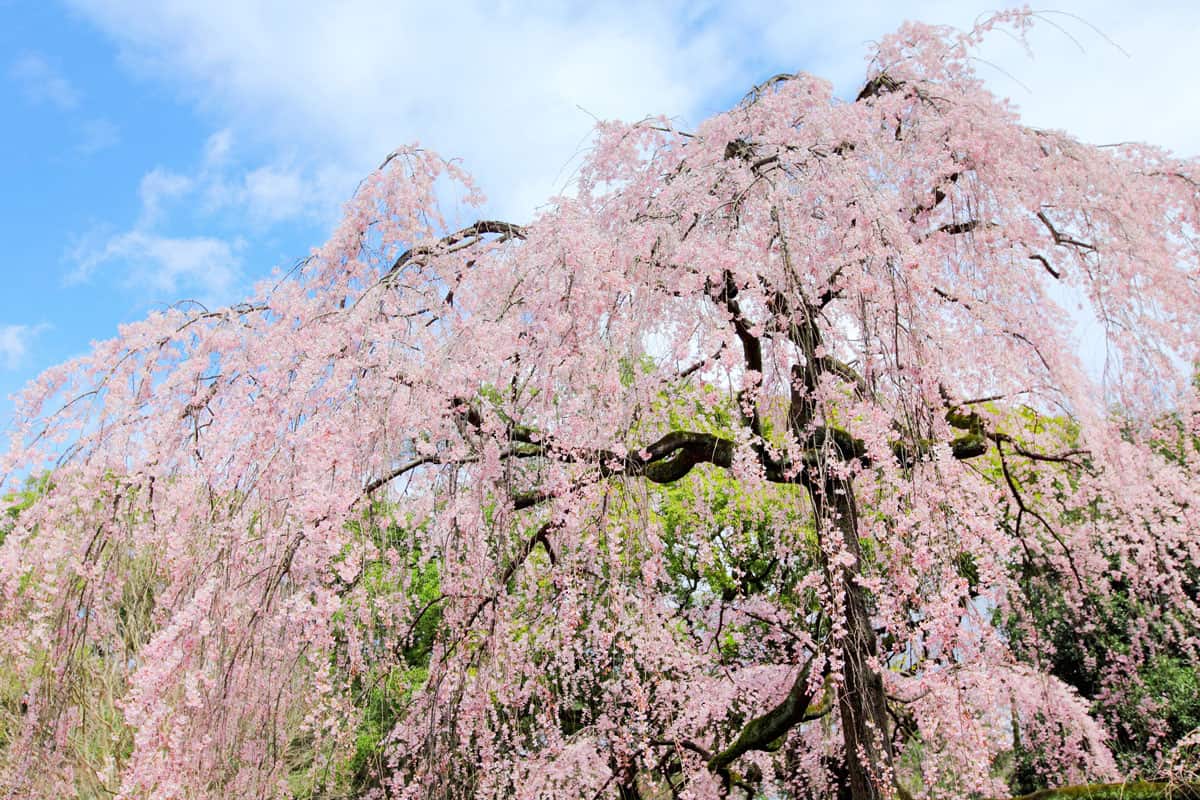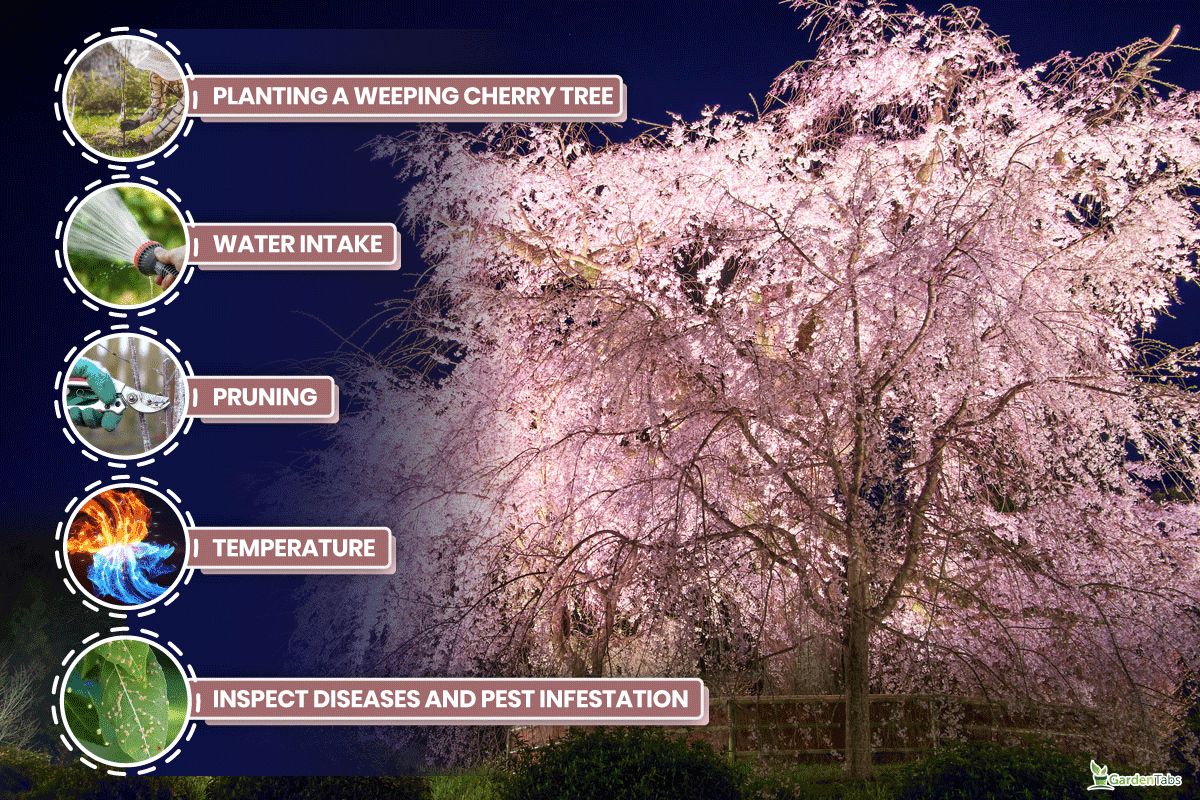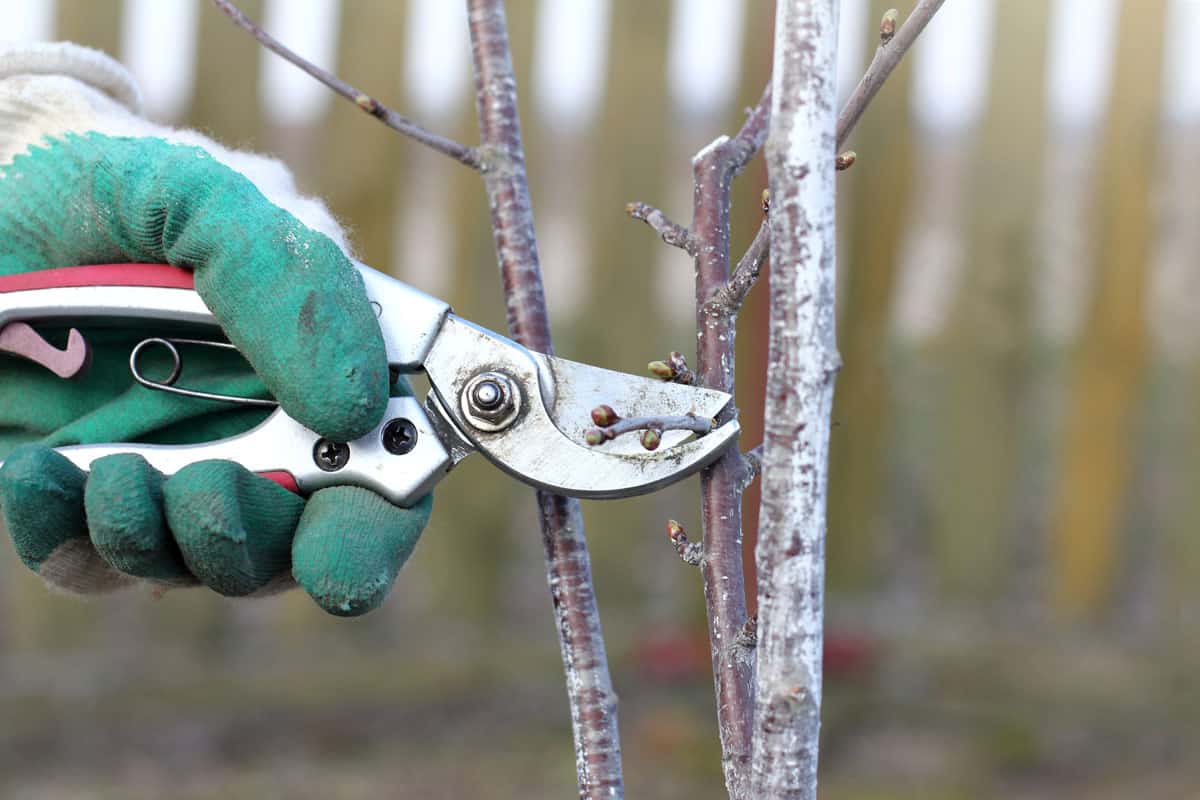Weeping cherry trees are beautiful ornaments that grow pink or white-pink flowers at the beginning of spring. And if you have one in your garden, you're probably wondering how long it will stay there. We did the research and found the answer!
The lifespan of a weeping cherry tree varies depending on where it was planted. Weeping cherry trees around 30-40 years. However, in its native country China, and Japan, with similar weather conditions, weeping cherry trees can live for hundreds of years.
That said, weeping cherry trees can live for a long time, depending on how you treat them. The great thing is they can last longer than the years mentioned, read on to learn how!
How Long Do Weeping Cherry Trees Live?
Weeping cherry trees are one of the most sensitive ornamental trees. They are pretty sensitive to their surrounding temperature, water intake, and fungal infection, which is why their lifespan can be shorter.
Depending on how you care for them, they can live for about 30-40 years. The tree is native to China, Korea, and Japan, where it can last for up to a hundred years.
A weeping cherry tree in Japan, called Takizakura or "Waterfall Cherry Tree" by the locals, is said to be over 1,000 years old.
Other weeping trees in Japan, such as one in Maruyama Park, are reportedly over 200 years old.
Weeping cherry trees are not particularly fast-growing trees. For example, the Higan cherry tree in North America grows 12 inches annually for the first ten years.

This is common for most cultivars, but some grow much slower. But soon enough, they will grow larger. Some flowering cherry trees, like the Yoshino cherry, can reach around 50 feet in almost 20 years.
Your weeping cherry tree could be targeted for many health problems within this timeframe.
They are prone to pests, fungi, and infection. The most common fungus they can be infected with is the CytoSport cankers, which can be detrimental to their growth.
Factors such as dry soil and weather condition play a huge role in their growth, so look out for those. Weeping cherry trees typically grow in USDA zones 4-8.
The leaves of weeping cherry trees are flat and elongated. The leaves change color per season—a dark green during the summer and orange and red in the fall. By winter, there will be no leaves left.
The blooms have 4 or 5 in bunches and grow beautiful, fragrant white to pinkish colors.
Read: "How Fast Does A Weeping Cherry Tree Grow?"
How To Take Care Of Weeping Cherry Trees

To properly take care of weeping cherry trees, you must plant them in favorable weather conditions. Other than that, they also require the right amount of sunlight, not too much and not too little.
Following these maintenance tips will help you grow beautiful blossoms by spring.
Planting A Weeping Cherry Tree
To have a healthy weeping cherry tree, start by planting them the right way. It's not difficult to plant a weeping cherry tree. You should only remember a couple of things.
Plant them in a deep hole, as deep as the root ball and three times wide. Lay a yardstick on the soil to know that the trunk is leveled to the surrounding ground.
Do not add anything else. Avoid any fertilizer and amendments when planting.
Fill the hole halfway with the soil and tamp it firmly with your tool or foot. Once done, fill the top with water and let it drain. Then, you can add the rest of the soil.

Water Intake
The most important part of caring for a weeping cherry tree is its water intake. Weeping cherry trees prefer moist and healthy soil. You must water them deeply during the warm and dry seasons.
Do not water the tree lightly; instead, water it slowly to ensure that the water is being absorbed deep into the soil. Don't let the roots dry out, nor drown them.
You can add about a layer of organic mulch around the growing tree during its first spring.
Check out this organic mulch on Amazon.
Pruning

Unlike popular belief, weeping cherry trees do not need excessive pruning to grow correctly.
They only require a few snips here and there to allow for growth. There is a difference between trimming them for cleaning purposes and not trimming at all.
Weeping cherry trees are mostly grafted from another cultivar. You'll know that a tree is grafted when the bottom looks unusually thicker than the top parts. This causes the weeping figure of the tree.
To maintain that aesthetic, avoid over-pruning them and let them grow independently.
You should only prune the crown of your weeping cherry tree if it's growing too heavy to the point where it can't withstand strong winds or when branches snap.
Practice pruning during the winter when the wind is powerful and snow collects on the crown's surface.
Prune branches that are touching each other. This will allow for air circulation in your tree and prevents diseases from building up.
Trim the branches at least 2 inches apart. Generally, branches that are sticking to the ground should be trimmed. Trim at least 24 inches from the ground for a neat look.
Prune branches that are growing straight up to keep the weeping appearance.
Temperature
Weeping cherry trees prefer cooler conditions but can tolerate both warm and cold. But still, avoid exposing them for far too long under the sun.
Common weeping cherry trees grow in USDA zones 4-8 (some cultivars may differ), and the recommended temperature to grow them is above -20F.
Find a location around your lawn where the sun shines best.
For weeping cherry trees to grow healthy, they need at least eight hours of sun daily. Anything more than that is highly discouraged. If necessary, provide shade to protect the tree from the harsh heat.
Inspect Diseases And Pest Infestation
Regularly check your tree's leaves, branches, and roots to look for pesky pests such as beetles, bugs, and caterpillars. Remove the pests immediately and monitor your tree's leaves. Remove any flower or branch affected by the pests.
In severe cases, you may use a fungicide or bactericide to eliminate the pests.
Weeping cherry trees are also commonly attacked by powdery mildew disease. A fungus that causes infection in the tree.
It will begin as a minor problem, but if you don't get rid of it soon, it will severely damage your tree.
To avoid this fungal infection, do not overhydrate your tree. Moist soil attracts fungi the most. When you water the tree, avoid getting the leaves wet.
Can You Eat The Cherries Off A Weeping Cherry Tree?

Yes, you can eat cherries from a weeping cherry tree. They are safe to eat and are not poisonous to humans.
Other than that, you can turn them into preserves and desserts. However, some do not enjoy the taste of weeping cherry trees because of their sourness.
Read: "Do Weeping Cherry Trees Produce Fruit? [Can You Eat It?]"
Do Weeping Trees Have Big Roots?
Yew, weeping cherry trees have extensive roots that can be invasive and damaging if planted near a structure.
The root system can spread for 33 to 39 feet in diameter. But with a depth of 3 feet. That said, do allow for a 10 feet difference between the tree and your home.
Can You Grow A Weeping Cherry Tree From Seed?
Weeping cherry trees are grafted trees. This means that they grow as a result of grafting. And you cannot grow a weeping cherry tree from its seed.
To grow weeping cherry trees, you need to graft a cultivar on its trunk for the tree to become a weeping cherry tree. Most weeping cherry trees are grafted.
To Wrap It Up
Weeping cherry trees are beautiful, fragrant trees that look enchanting in a landscape.
They require a lot of attention and care to last long and healthy. Even if their lifespan is 30-40 years, you must follow garden tips to keep them healthy.
They can last longer and bloom enchanting blossoms during winter or spring!

